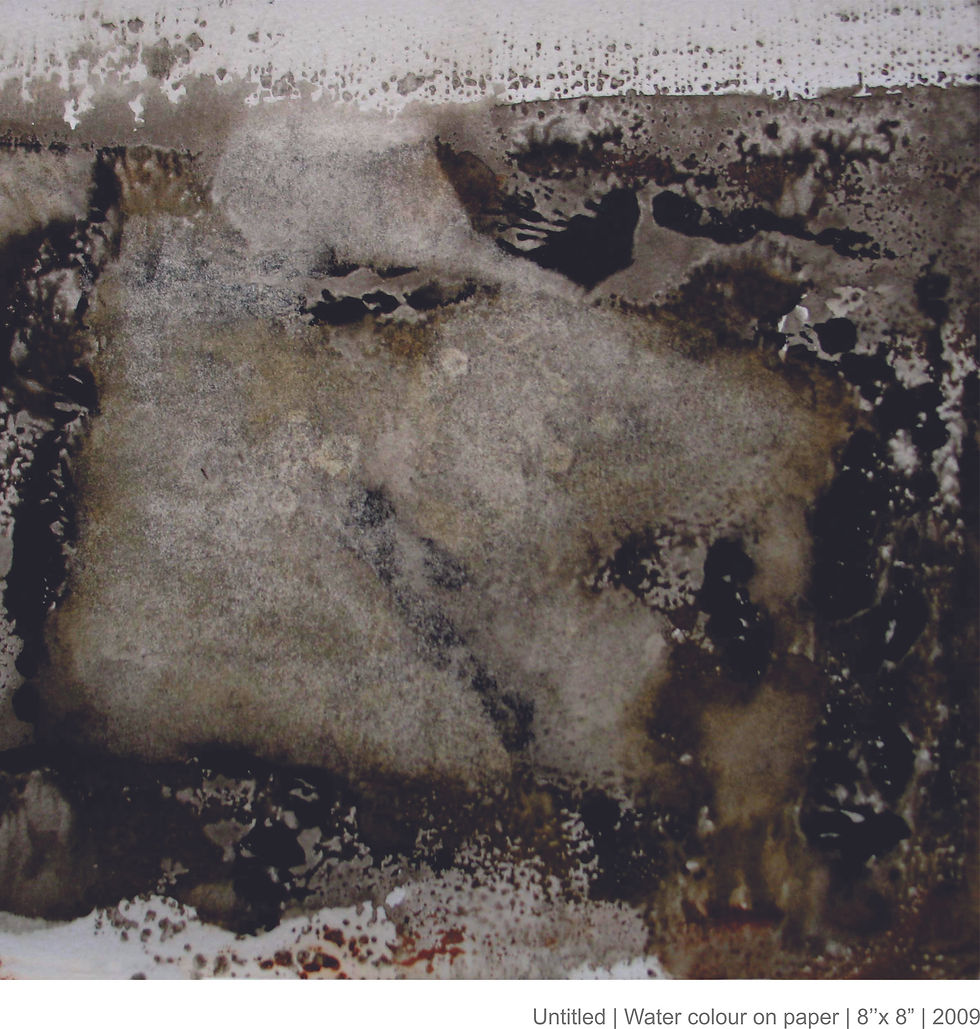








The Bliss of Choice 2009
Solo Exhibition
THE BLISS OF CHOICE
Shilpa Nikam is a painter who likes to explore the medium of her work to its fullest depth and texture. However, the recent body of medium sized watercolours with a mélange of incongruousforms is far from experimental. The untitled abstracts follow each other as voices in a choir or as the continuous scale structure of a chant. The pause is on colour patch, blob and tract to highlight a seemingly wayward behavior of pigments. The fractured line, the opaque plane or network of traces and an occasional Bindu appear to be still and floating in a vacant, non-life planetary space; sometimes, the threads, objects, debris and fugitive impressions of brush strokes are carried away, as fading movements, as passing incidents: an inexorable desire to ornament the white sheet of paper with slippages and overtones is evident; it holds basically, the drama of colour and line. The particular handling of water-based hues generates cool and temperate zones. There is an impression that an evolution and a process is being carefully studied in the deliberate daub- gash-spread method which brings up flotsam-like stains as though the artist is intensifying the “moment of creation” and is relentless about being committed to physical anarchy, in order to emerge with clear and limpid ideation. To represent the idea in an abstract language is the inevitable “next step” of artists who have expended considerable training time in art school and print making initiatives. Shilpa Nikam’s water colours carry the experience of working the etching plate on hard or soft ground, of engraving, of inking a metal plate and transferring an image onto treated paper. arnering a perspective that focuses on the line and its “destiny”, as it were, the wet and dry tentativeness and translucency of the composition-like frames, reveals a taalim (tutelage) where improvisation of stroke, scratch and dot hold sway. Her current gestural works are the result of a refined, calculated flailing, which is the sign language she adopts; but, the viewer on the other
hand, may sense impulsiveness and uncontrolled, though lyrical and meandering entanglement. Shilpa is not compelled to show a correspondence with the world outside and the imaginings ofher craft. Since both the artist and the onlooker have the bliss of choice, to see what they wantto see – whether it is to respond to the invitation into a landscape, to sense the happenings on a water body or the activity on the surface of natural materials as leaf, stone and dust – nodefinitive roop, rang or aakaar is suggested by the artist, a sphere of freedom is palpable for the
observer. The infinite possibilities of harmony and texture, demonstrated in the indefinable image, born of ceaseless action, and akin to doodling are birthed with energy that appears to be one of self-hypnosis. Reflections on painting for Shilpa have affinities with recitations and mantra-s for the divine; recalling sloka-s and retrieving time and again the adages from epical books, structure her art practice. The naming and acknowledging of a god-like presence, she affirms, is a direct personal experience which has to be put down as colour. The reading of scriptures is important
propulsion to create spaces that breathe light and also establish the force of an unknown power, she says. With the production of these mirage-like assemblages, Shilpa Nikam keeps abreast with her contemporaries who fashion biomorphic themes and the mystique of the abstract and exuberant picture.
ROSHAN SHAHANI
2009


